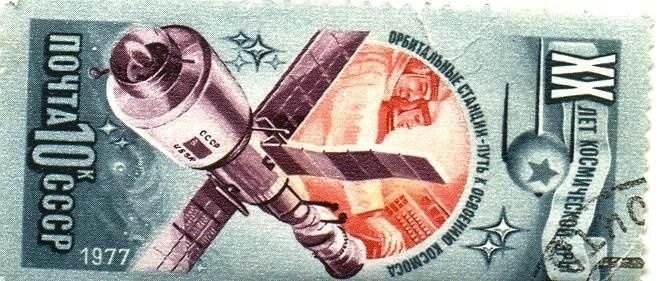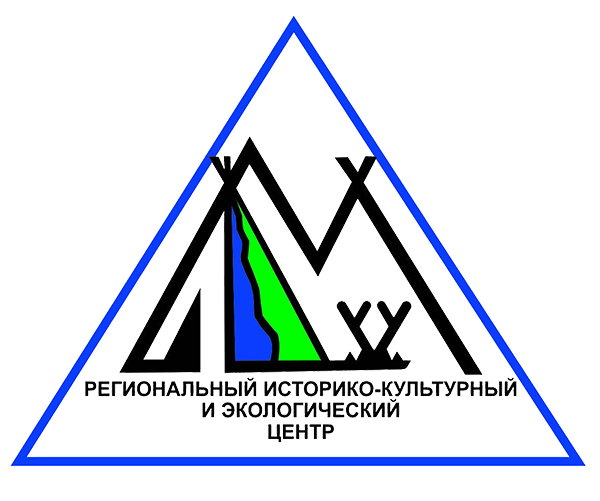Рубрика: Учинение обыкновенной почты (+ translation) (от 19.01.2024)

Последние года можно по-настоящему считать концом «темной эры» исследования космоса. В 2023 году был вновь установлен рекорд пусковой активности: в космос стартовали 220 ракет-носителей. Из них 212 достигли цели, доставив на околоземные орбиты и межпланетные трассы 2868 аппаратов, что на 350 больше, чем в предыдущем рекордном 2022 году. В связи с этим предлагаем снова вернуться в «колыбель» космической эры. С.П. Королев, будущий создатель советских космических кораблей, уже в свои ранние годы работы в ГИРДе в 1935 году ставил перед собой цель осуществить полет человека в стратосферу. Космонавт Б.Волынов на пятидесятилетии Центра подготовки космонавтов сказал: «Если бы не Сергей Павлович Королев, не его талант, первый спутник явно был бы не наш. Спросили же и фон Брауна в Америке: «Чего Вам не хватает? Деньги же выделили!» – «Сергея Королева», – ответил он («Российская газета» 11.02.2010).
В апреле 1960 года коллектив ОКБ-1 под руководством Королева разработал план космического корабля "Восток-3" для отправки человека в космос. Решением Правительства от 11 октября 1960 года было дано поручение подготовить и осуществить запуск "Востока" (3КА) с человеком на борту в декабре того же года как задачу наивысшего приоритета. Первый лёт корабля в упрощённой версии состоялся 15 мая 1960 года, но при попытке вывести на орбиту корабль с собаками Чайкой и Лисичкой произошла неудача из-за взрыва в двигателе. Однако 19 сентября того же года успешно прошёл запуск с собаками Белкой и Стрелкой на борту, которых затем благополучно вернули на Землю 20 августа.
Перед историческим полетом Юрия Гагарина, три космических корабля успешно совершили свои миссии, возвращаясь из космоса на Землю. Первым таким кораблем был тот, который 19 августа 1960 года отправил в космос собак Белку и Стрелку, а также крыс, мышей и черепах. Это событие стало прорывом в космической истории. Следующий корабль, запущенный в честь 27-летия Гагарина 9 марта 1961 года, вёз на борту собаку Чернушку. Третий корабль, отправленный 25 марта, также перевозил животных, непосредственно перед Гагариным полетом.
Эти полеты позволили убедиться, что живые организмы способны выдерживать экстремальные условия, такие как перегрузки и невесомость. Однако вопросы о влиянии космических условий на человеческий организм, в том числе на систему кровообращения и процессы пищеварения в невесомости, оставались открытыми и требовали проверки на человеке. Юрий Гагарин в своем полете 12 апреля 1961 года провел в космосе 108 минут, сделав один оборот вокруг Земли, и стал первым человеком, побывавшим в космосе. В 2011 году 12 апреля был провозглашен Генеральной Ассамблеей ООН Международным днем полета человека в космос, отмечая этот важный шаг для человечества как международный праздник. Серия данных марок была выпущена в 1977 году, предмет был передан нам от Т.М. Леншиной в дар.
#Почта #СССР
The last few years can truly be considered the end of the "dark era" of space exploration. In 2023, a record of launch activity was set again: 220 launch vehicles were launched into space. Of these, 212 reached their targets, delivering 2868 vehicles to Earth orbits and interplanetary paths, which is 350 more than in the previous record-breaking year of 2022. In this regard, we propose to return again to the "cradle" of the space age. S.P. Korolev, the future creator of the Soviet spacecraft, already in his early years of work in GIRD in 1935 set himself the goal of realizing a human flight into the stratosphere. Cosmonaut B.Volynov at the fiftieth anniversary of the Cosmonaut Training Center said: "If not for Sergei Pavlovich Korolev, not his talent, the first satellite would clearly not have been ours. Von Braun was also asked in America: "What do you lack? The money has been allocated!" - "Sergei Korolev," he replied ("Rossiyskaya Gazeta" 11.02.2010).
In April 1960, the staff of OKB-1 under Korolev's leadership developed a plan for the Vostok-3 spacecraft to send a man into space. By the Government's decision of October 11, 1960, it was instructed to prepare and carry out the launch of Vostok (3KA) with a man on board in December of the same year as a task of the highest priority. The first flight of the ship in a simplified version took place on May 15, 1960, but an attempt to put the ship into orbit with the dogs Chaika and Lisichka failed due to an explosion in the engine. However, on September 19 of the same year, the launch with the dogs Belka and Strelka on board was successful, and they were safely returned to Earth on August 20.
Before Yuri Gagarin's historic flight, three spacecraft successfully completed their missions, returning from space to Earth. The first such craft was the one that sent the dogs Belka and Strelka, as well as rats, mice and turtles, into space on August 19, 1960. This event was a breakthrough in space history. The next spacecraft, launched in honor of Gagarin's 27th birthday on March 9, 1961, carried the dog Chernushka. The third ship, sent on March 25, also carried animals, just prior to Gagarin's flight.
These flights provided evidence that living organisms could withstand extreme conditions such as overloads and weightlessness. However, questions about the effects of space conditions on the human body, including the circulatory system and digestive processes in weightlessness, remained open and needed to be tested on humans. Yuri Gagarin, in his flight on April 12, 1961, spent 108 minutes in space, making one revolution around the Earth, and became the first man to be in space. In 2011, April 12 was proclaimed by the UN General Assembly as the International Day of Human Space Flight, marking this important step for mankind as an international holiday. The series of these stamps was issued in 1977, the item was donated to us by T.M. Lenshina.
Методист МОД
Н.С. Сологуб
В апреле 1960 года коллектив ОКБ-1 под руководством Королева разработал план космического корабля "Восток-3" для отправки человека в космос. Решением Правительства от 11 октября 1960 года было дано поручение подготовить и осуществить запуск "Востока" (3КА) с человеком на борту в декабре того же года как задачу наивысшего приоритета. Первый лёт корабля в упрощённой версии состоялся 15 мая 1960 года, но при попытке вывести на орбиту корабль с собаками Чайкой и Лисичкой произошла неудача из-за взрыва в двигателе. Однако 19 сентября того же года успешно прошёл запуск с собаками Белкой и Стрелкой на борту, которых затем благополучно вернули на Землю 20 августа.
Перед историческим полетом Юрия Гагарина, три космических корабля успешно совершили свои миссии, возвращаясь из космоса на Землю. Первым таким кораблем был тот, который 19 августа 1960 года отправил в космос собак Белку и Стрелку, а также крыс, мышей и черепах. Это событие стало прорывом в космической истории. Следующий корабль, запущенный в честь 27-летия Гагарина 9 марта 1961 года, вёз на борту собаку Чернушку. Третий корабль, отправленный 25 марта, также перевозил животных, непосредственно перед Гагариным полетом.
Эти полеты позволили убедиться, что живые организмы способны выдерживать экстремальные условия, такие как перегрузки и невесомость. Однако вопросы о влиянии космических условий на человеческий организм, в том числе на систему кровообращения и процессы пищеварения в невесомости, оставались открытыми и требовали проверки на человеке. Юрий Гагарин в своем полете 12 апреля 1961 года провел в космосе 108 минут, сделав один оборот вокруг Земли, и стал первым человеком, побывавшим в космосе. В 2011 году 12 апреля был провозглашен Генеральной Ассамблеей ООН Международным днем полета человека в космос, отмечая этот важный шаг для человечества как международный праздник. Серия данных марок была выпущена в 1977 году, предмет был передан нам от Т.М. Леншиной в дар.
#Почта #СССР
The last few years can truly be considered the end of the "dark era" of space exploration. In 2023, a record of launch activity was set again: 220 launch vehicles were launched into space. Of these, 212 reached their targets, delivering 2868 vehicles to Earth orbits and interplanetary paths, which is 350 more than in the previous record-breaking year of 2022. In this regard, we propose to return again to the "cradle" of the space age. S.P. Korolev, the future creator of the Soviet spacecraft, already in his early years of work in GIRD in 1935 set himself the goal of realizing a human flight into the stratosphere. Cosmonaut B.Volynov at the fiftieth anniversary of the Cosmonaut Training Center said: "If not for Sergei Pavlovich Korolev, not his talent, the first satellite would clearly not have been ours. Von Braun was also asked in America: "What do you lack? The money has been allocated!" - "Sergei Korolev," he replied ("Rossiyskaya Gazeta" 11.02.2010).
In April 1960, the staff of OKB-1 under Korolev's leadership developed a plan for the Vostok-3 spacecraft to send a man into space. By the Government's decision of October 11, 1960, it was instructed to prepare and carry out the launch of Vostok (3KA) with a man on board in December of the same year as a task of the highest priority. The first flight of the ship in a simplified version took place on May 15, 1960, but an attempt to put the ship into orbit with the dogs Chaika and Lisichka failed due to an explosion in the engine. However, on September 19 of the same year, the launch with the dogs Belka and Strelka on board was successful, and they were safely returned to Earth on August 20.
Before Yuri Gagarin's historic flight, three spacecraft successfully completed their missions, returning from space to Earth. The first such craft was the one that sent the dogs Belka and Strelka, as well as rats, mice and turtles, into space on August 19, 1960. This event was a breakthrough in space history. The next spacecraft, launched in honor of Gagarin's 27th birthday on March 9, 1961, carried the dog Chernushka. The third ship, sent on March 25, also carried animals, just prior to Gagarin's flight.
These flights provided evidence that living organisms could withstand extreme conditions such as overloads and weightlessness. However, questions about the effects of space conditions on the human body, including the circulatory system and digestive processes in weightlessness, remained open and needed to be tested on humans. Yuri Gagarin, in his flight on April 12, 1961, spent 108 minutes in space, making one revolution around the Earth, and became the first man to be in space. In 2011, April 12 was proclaimed by the UN General Assembly as the International Day of Human Space Flight, marking this important step for mankind as an international holiday. The series of these stamps was issued in 1977, the item was donated to us by T.M. Lenshina.
Методист МОД
Н.С. Сологуб
